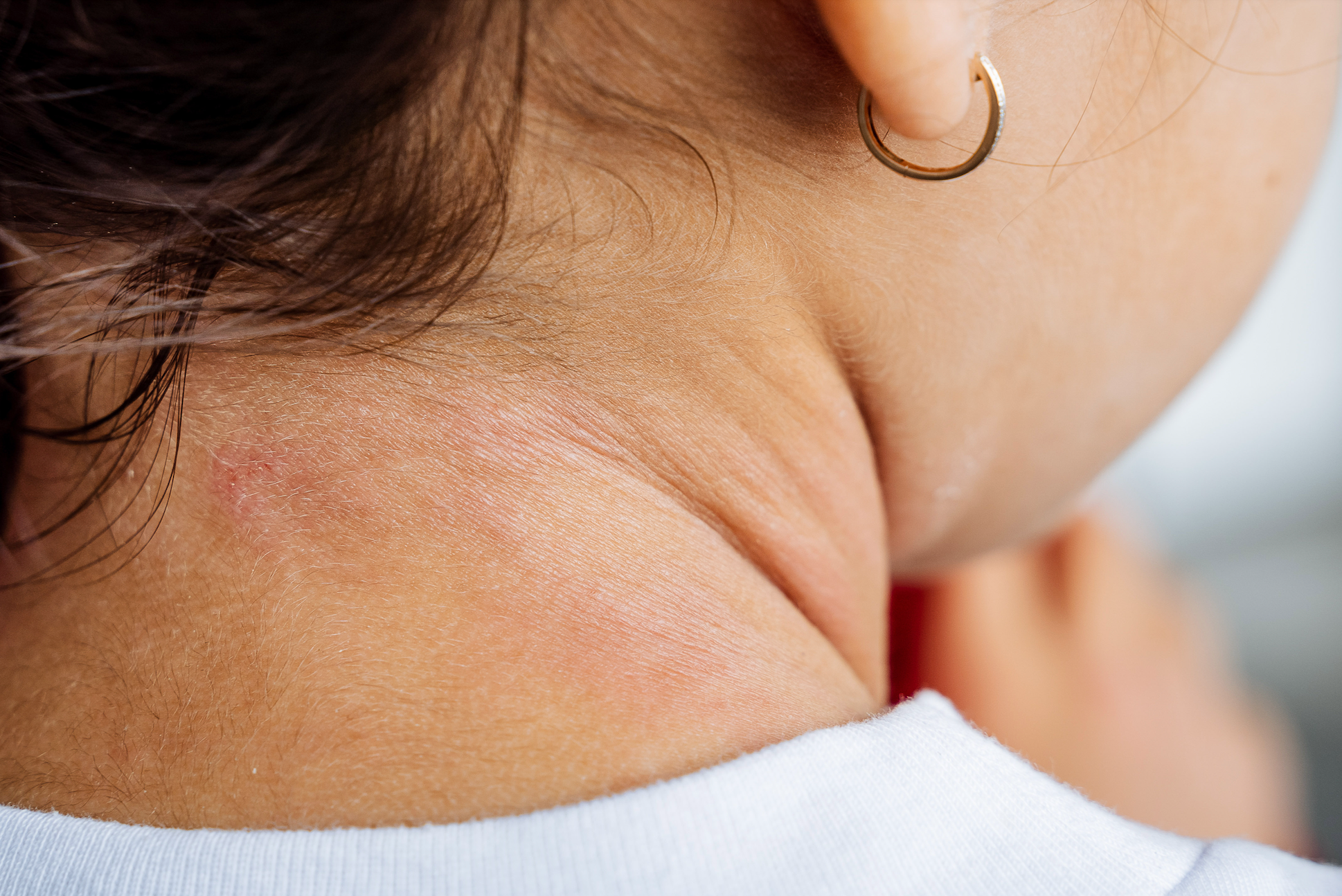Eczema is a pesky skin condition characterized by itching, burning, flaky skin, redness, and sometimes even bleeding. While the overarching cause of eczema is unknown, and many people turn to steroids to manage their symptoms; however, continued use can lead to problems.
In this blog, we’re going to take a look at the Topical Steroid Withdrawal phases and what Topical Steroid Withdrawal treatment entails. We’ll also answer the common question, are eczema steroid creams safe?
Are Eczema Steroid Creams Safe At All?
First, let’s talk about what eczema steroid creams are supposed to be used for. Because when used properly, eczema steroid creams are 100% safe.
The goal of using a steroid cream for eczema is to use the cream for no longer than 2 weeks at a time to help get a flare-up under control as you eliminate the cause of the flare-up (be it a material trigger, something in your diet, or finding a way to calm your stress). Eliminating the true cause of the flare-up is an especially important thing to keep in mind.
Often, many people mistakenly find that their eczema suddenly “disappears” with the use of steroid creams for eczema, so they don’t bother to narrow down and eliminate the true cause. But this can actually have a negative effect on your body.
What you don’t want to do is to continually use steroid creams all the time at the slightest itch– this can lead to a reliance on steroid creams. TSW is what happens next when you try to stop using the cream.
So What Is Topical Steroid Withdrawal & What Causes It?
Topical Steroid Withdrawal (TSW), also known as Red Skin Syndrome or Topical Steroid Addiction, is a debilitating skin condition that is a symptom of the overuse of topical steroids. Over time, you might find that your topical steroid isn’t working as well as it used to, and that might lead to this condition.
TSW is caused by the body’s addiction to a steroidal cream. It is a withdrawal in the true sense of the word and can only be overcome by letting the condition run its course. For patients who used topical steroids for eczema, determining and avoiding triggers will be the only way to avoid returning to the use of these creams.
What Does Topical Steroid Withdrawal Treatment Look Like?
There are a couple of different approaches to TSW treatment, and they look much like any other addiction treatment does – after all, your skin and immune system are essentially addicted to the steroids you’ve been using! Your two options are to quit the creams cold turkey or slowly decrease your use of the creams. Researchers are working on other ways to help patients with TSW, but those options are a long way off. As you eliminate steroids from your body, you will go through the stages of steroid withdrawal.
What Are the Topical Steroid Withdrawal Phases?
There aren’t necessarily any “cookie cutter” categories that everyone will fit into. It’s difficult to find two people whose reactions to TSW are the same. However, some general stages are as follows:
Inflammation
In the mildest stage of all, inflammation is the first sign that you are withdrawing from steroid use. Your skin may feel puffy, warm, and tender to the touch. All of your original eczema symptoms will likely feel exacerbated and you’ll be highly tempted to put more steroid cream on.
Scab Formation
At this stage, the skin will likely ooze with pus and form a strange, yellowish, scaly scab. It’s important not to pick at this formation, as it will prolong the healing process.
Flaking
At this stage, the scabs flake and fall off, sometimes revealing sores if the damage was deep enough. This stage is where the healing begins, starting with the innermost layer.
Wound Contraction
Also known as the “remodeling stage,” this is when the wounds begin to heal on the outside. Extensive wound areas will result in an odd “pinched” look while the wound heals.
How Long Does TSW Last?
Depending on how long the individual used steroids, what strength was used, and where it was used, TSW can last between 6 months and a couple of years. Furthermore, the strictness with which you avoid your triggers will also determine how long it can take.
Finding Daily Eczema Treatment
As we’ve mentioned many times, the best treatment for eczema starts with avoiding your body’s triggers. In addition to this, keeping your skin moisturized and steroid-free is the best way to keep your skin barrier healthy and less prone to damage. For patients looking for some non-steroidal relief during flare-ups, our Skin Recovery Cream is an amazing option. You can also safely use our Skin Recovery Cream while you are recovering from TSW since our cream does not contain steroids.





















Leave a comment